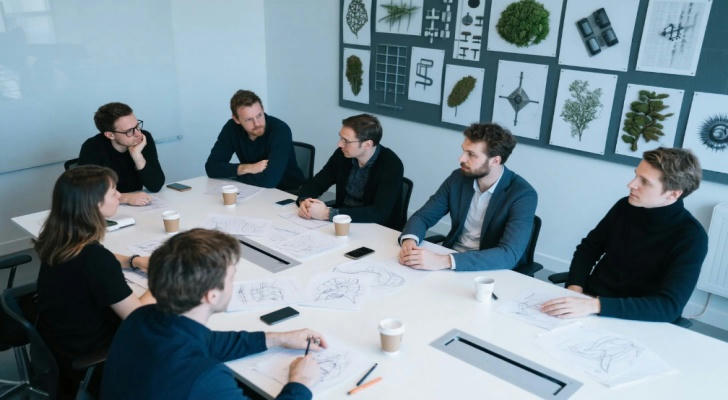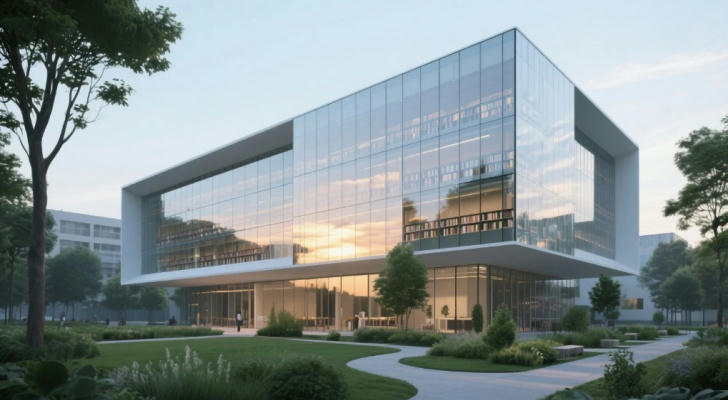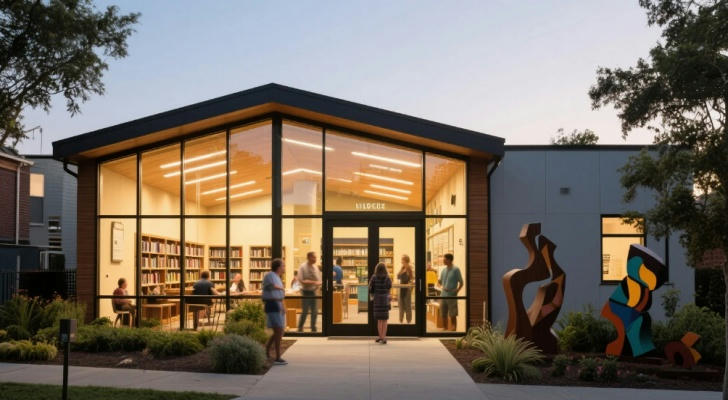The Creative Space of Architectural Designers: How to Innovate Under Tight Deadlines?
Architectural design is a profession that blends art, science, and technology. Designers need not only solid expertise but also the ability to showcase creativity and problem-solving skills within tight timelines. With fast-paced project cycles and diverse client demands, how can architects innovate under pressure? This article explores how architectural designers can enhance their skills through learning and training resources, sparking creativity in high-pressure environments and boosting career competitiveness.

Continuous Learning: The Foundation for Honing Professional Skills 📚
The rapidly evolving architectural design industry demands that designers continuously update their knowledge. Building Information Modeling (BIM), sustainable design, and digital tools have become industry standards. Here are some valuable learning resources:
• Online Course Platforms: Platforms like Coursera, edX, and Udemy offer courses related to architectural design, covering in-depth training on software like Revit, AutoCAD, and Rhino. For instance, Coursera’s “Building Information Modeling (BIM) Fundamentals” course, offered by renowned universities, is suitable for both beginners and advanced learners. Additionally, Udemy’s Rhino Grasshopper course helps designers master parametric design, enhancing their ability to model complex forms.
• Professional Certifications: Earning certifications like LEED (Leadership in Energy and Environmental Design) or those offered by the American Institute of Architects (AIA) can strengthen a designer’s expertise in green building and sustainable design. These certification programs often combine online learning with practical case studies, helping designers apply theory to real-world projects.
• Industry Conferences and Workshops: Participating in the AIA Annual Conference or local design workshops allows designers to explore cutting-edge trends, such as smart city design or modular construction techniques. These events also provide opportunities to network with peers and spark inspiration.
By regularly engaging with these learning opportunities, designers can stay abreast of technological advancements and demonstrate stronger expertise in their projects.

Igniting Creativity: Balancing Time Management and Innovation ⏰
In architectural design, time is often the greatest challenge. Clients may demand preliminary proposals in a short timeframe, while creativity typically requires time to flourish. Here are strategies to help designers stay innovative under tight deadlines:
• Brainstorming and Rapid Sketching: In the early stages of a project, using quick hand-drawn sketches or tools like SketchUp for conceptual modeling can help designers capture ideas swiftly. Setting aside 30 minutes for a focused brainstorming session, emphasizing divergent thinking, can prevent getting bogged down in details too early.
• Cross-Disciplinary Inspiration: Architectural design can draw inspiration from other fields. For example, studying organic forms in nature or the minimalist aesthetics of industrial design can inject fresh ideas into architectural concepts. Designers can broaden their perspectives through TED Talks or art exhibitions.
• Collaboration and Feedback: Regular communication with team members or clients, coupled with timely feedback, ensures designs stay aligned with requirements. Online collaboration tools like Miro can streamline idea organization in remote settings.
These methods not only help designers remain efficient under pressure but also foster innovation through structured processes.
Technical Tools: Empowering Efficient Design 🛠️
Digital tools are indispensable in modern architectural design. Here are some resources and tools to boost efficiency:
• BIM Software: Tools like Revit and ArchiCAD support collaborative workflows, enabling designers to transition from concept to construction drawings quickly. Autodesk’s official website offers Revit tutorials suitable for designers at all levels.
• Rendering and Visualization: Tools like Lumion and Enscape allow designers to generate high-quality renderings rapidly, helping them present design concepts to clients effectively. YouTube’s Lumion tutorial channels provide lessons ranging from beginner to advanced levels.
• Open-Source Resources: Websites like ArchDaily and Dezeen offer rich case studies, enabling designers to learn from the design principles and execution of outstanding global projects.
By mastering these tools, designers can improve workflow efficiency and deliver more compelling results within limited timeframes.

Professional Communities: Expanding Networks and Resources 🤝
Joining professional communities is a key way to enhance career competitiveness. Local chapters of the American Institute of Architects (AIA) provide platforms for networking and offer regular lectures and training sessions. Additionally, LinkedIn’s architectural design groups allow designers to stay updated on industry trends and share project experiences. Engaging in these communities not only expands professional networks but also provides inspiration and support for career growth.
Case Study: A Small Library Design Born from a Tight Schedule 🏛️
Consider the example of a small community library project in the U.S. Designer Sarah had just three weeks to deliver a preliminary proposal. The client wanted a modern design that reflected the community’s culture while meeting sustainability standards. Sarah began by taking a Coursera course on the latest BIM workflows, using Revit to quickly build models and collaborate with her team. Early in the process, she referenced Nordic library case studies on ArchDaily, drawing inspiration from their open layouts and natural lighting designs. Using rapid sketching techniques, she completed three distinct conceptual sketches in two days and finalized the direction through Zoom discussions with the client. In the rendering phase, Sarah used Lumion to produce high-quality visualizations, effectively conveying the design vision to the community. Ultimately, she delivered the proposal on time, and the project was highly praised for its creativity and practicality.
This case demonstrates how systematic learning, tool proficiency, and effective time management enable designers to create innovative, practical work under pressure.

Conclusion 🌈
Architectural design is a dual challenge of technology and creativity. By committing to continuous learning, mastering efficient tools, engaging in professional communities, and applying smart time management strategies, designers can innovate within tight deadlines. Whether through online courses to refine skills or cross-disciplinary inspiration to spark creativity, architects can maintain a competitive edge in a fast-evolving industry. May these resources and strategies inspire and support your career journey.
